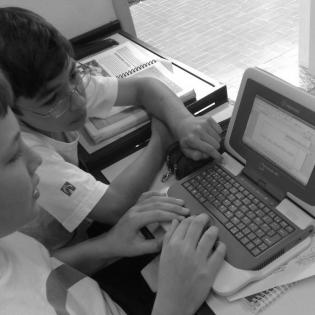Improving Health and Safety
The group collaborates to plan, carry out, and reflect on an authentic service project that meets the health and safety needs of the community. This is based on the needs assessment conducted through surveying community members in previous lessons.
The learner will:
- analyze choices and make a group decision.
- identify and plan ways for individuals to contribute to the whole project.
- calculate time, materials, and funds needed to complete the project.
- carry out the service-learning project.
- reflect through discussion and writing on his or her personal response to project and learning outcomes.
- notes from each group brainstorming in the previous lesson
- materials depend upon the selected project
Invite family members to a presentation/demonstration at which the group shares the impact of their service-learning project.
Reflect on how participants feel about their project, from survey to selection to carrying out to demonstration.
Create a large puzzle with six pieces on butcher paper (may be done electronically). Put the six pieces at six different stations. Children move from station to station to write their thoughts on each giant puzzle piece.
- Piece One: write a word that describes how they feel inside.
- Piece Two: write a word that descibes their impact.
- Piece Three: write words that descibe the people they worked with.
- Piece Four: write what they want to do next.
- Piece Five: draw a face representing the success of the project.
- Piece Six: write how they felt about the process.
Instructions
Anticipatory Set:
Ask groups to share their project ideas from the brainstorming at the end of the previous lesson.
Create a list of the top 3-5 issues, and each person may say why they recommend a specific project idea based on their interests, talents, and resources.
When participants have presented their opinions, hold a vote to determine which project the goup wants to plan and carry out. The facilitator makes the final choice based on all the information.
Facilitate a brainstorming of aa list of steps and roles in order to plan the project and the demonstration after the project. Think about communication, supplies, instruction, writing, donations, possible challenges, and other tasks. Discuss the expected and possible outcomes.
It is helpful to create a three column chart for organizing the project (Task, Who, Time). The group determines all the steps needed to complete the project on sticky notes. Then have them determine the order of the steps by moving the sticky notes on the poster under the Task column. The next step is to assign students to complete each task (they volunteer for whatever tasks they want to take on). Then work together to put deadlines on each task.
Facilitate the needed permissions, rides, purchases, and other logistics, but encourage the young people to plan and carry out the majority of the project, referring to the chart regularly to make sure they are on task and staying responsible. They may add to and edit the chart, as needed.
After they complete the service action, they make a demonstration to an audience. They can describe what they did, the outcomes, who was impacted and how, and what they learned. The demonstration may be in the form of ask it, song, slideshow/movie, media article, letters, or other method of communication.
Students collaborate to plan, carry out, and reflect on an authentic service project that meets the health and safety needs of the community. The project is selected based on the survey results and students' interests, talents, and resources.
Philanthropy Framework
-
Strand PHIL.IV Volunteering and Service
-
Standard VS 02. Service and Learning
-
Benchmark E.1 Select a service project based on interests, abilities, and research.
-
-
Standard VS 03. Providing Service
-
Benchmark E.1 Provide a needed service.
-
Benchmark E.3 Describe the task and the student role.
-
Benchmark E.4 Demonstrate the skills needed for the successful performance of the volunteer job.
-
-
Standard VS 04. Raising Private Resources
-
Benchmark E.3 Describe a service plan.
-
-
Standard VS 05. Integrating the Service Experience into Learning
-
Benchmark E.2 Evaluate progress on the service-learning project before, during, and after the project.
-
Benchmark E.3 Identify outcomes from the service.
-
-
